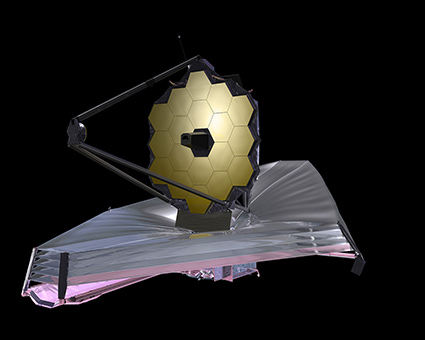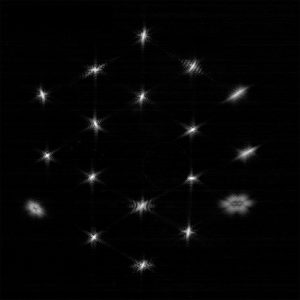
What is James Webb After?
Successfully launched on December 25, the James Webb Space Telescope (JWST) reached its destination on January 24, after an exciting month-long journey. Recently, he took his first photographs, of a star and of itself in its mirror.
The $10 billion telescope has successfully overcome thousands of stages that could go wrong during its journey. One of the most critical of these installation stages, which had to be performed in order for the telescope to become fully operational, was the deployment of its five-layered sunshield that will protect the equipment from sun damage while it operates at around -250°C. These layers, one 0.05 mm and the other four 0.025 mm thick, as large as a tennis court, unfolded smoothly to maintain an approximate 300°C difference between the telescope’s Sun-facing side and its working side, which faces deep space.
Completing hundreds of operations like this, the telescope came to a position beyond the Moon after about a five-minute final ignition of the spacecraft’s main thruster, dragging itself into an equilibrium point where the gravitational forces of the sun and Earth balanced each other. At this location about 1.5 million kilometres away from Earth, called the second Lagrangian Point (L2), JWST will drift around the Sun for years along with the Earth to steadily monitor outer space without consuming much fuel.
First Images
Arriving at his point of mission, JWST’s first job was to photograph a star so that its giant 18-piece main mirror could be adjusted. The star HD84406 was chosen for this purpose because it is bright enough and there is no other celestial body close to it.

The 18 bright spots you see in the photograph are actually all individual images of this star. What looks like a simple image of blurred starlight is now becoming the basis for aligning and focusing the telescope to deliver unprecedented images of the universe this summer. In the following months, the team will gradually adjust the mirror segments until the 18 images merge into a single star.
In addition to the HD 84406 image, NASA also shared a “selfie” that Webb took using a special lens aimed at the observatory’s primary mirror to assist during the alignment process.
The next step after this shot was to identify which point belonged to which mirror and to make the first correction into a planned hexagonal formation. This whole step was called “Segment Image Identification”.
The 18 bright spots you see in the photograph are actually all individual images of this star. What looks like a simple image of blurred starlight is now becoming the basis for aligning and focusing the telescope to deliver unprecedented images of the universe this summer. In the following months, the team will gradually adjust the mirror segments until the 18 images merge into a single star.
In addition to the HD 84406 image, NASA also shared a “selfie” that Webb took using a special lens aimed at the observatory’s primary mirror to assist during the alignment process.
The next step after this shot was to identify which point belonged to which mirror and to make the first correction into a planned hexagonal formation. This whole step was called “Segment Image Identification”.
REFERENCES
- 1. https://blogs.nasa.gov/webb/category/james-webb-space-telescope/
- 2. https://interestingengineering.com/james-webbs-golden-mirrors
- 3. https://www.space.com/james-webb-space-telescope-hexagonal-star-image
